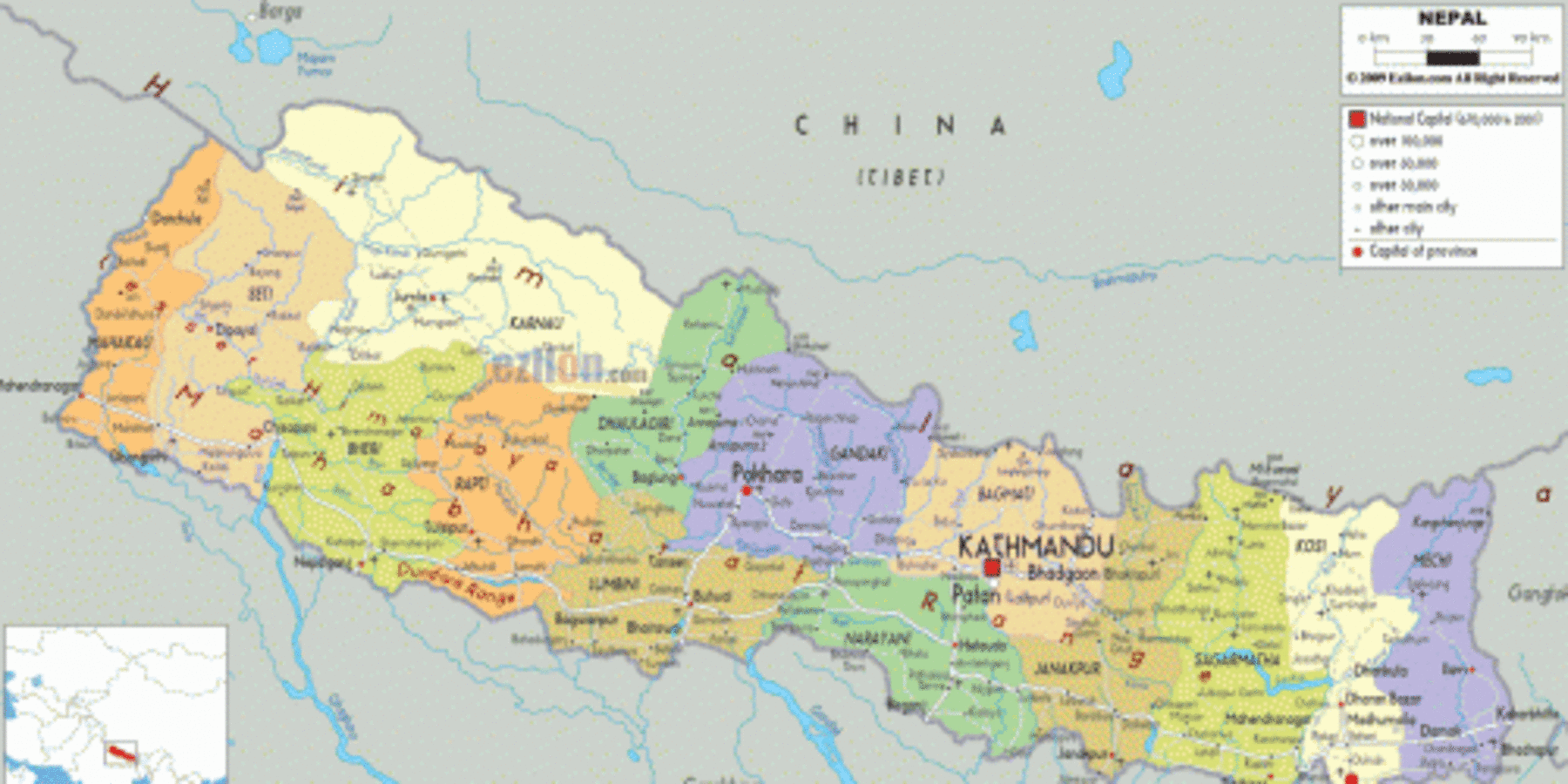
Nepal is a landlocked sovereign state located in South Asia. It is located in the Himalayas and bordered to the north by the People's Republic of China, and to the south, east, and west by the Republic of India.
This topographical diversity is matched by climatic diversity, with climatic conditions ranging from extremely cold tundra to hot humid tropics.
For a small country, Nepal has tremendous geographic diversity. It rises from less than 100 metres (328 ft) elevation in the tropical Terai—the northern rim of the Gangetic Plain, beyond the perpetual snow line to some 90 peaks over 7,000 metres (22,966 ft) including Earth's highest 8,848 metres (29,029 ft) Mount Everest or Sagarmatha which is between the distance of (93 to 155 mi).
Nepal is a multi-ethnic and multilingual country, with people belonging to different ethnic groups, each speaking different languages. Although the major population of Nepal is Hindu, people with different religions and cast/ethnic groups having different mother tongues live in harmony.
There are over 100 recognized languages in Nepal. The most commonly used are Nepali (also called Gurkhali or Khaskura), spoken by nearly 60 percent of the population, and Nepal Bhasa (Newari).
About Religion, There are Hindu 80.6%, Buddhist 10.7%, Muslim 4.2%, Kirant 3.6%, other 0.9%. However, Buddhism (at about 11%) also exerts a lot of influence. The Buddha, Siddhartha Gautama, was born at Lumbini, in southern Nepal.In fact, many Nepalese people combine Hindu and Buddhist practice; many temples and shrines are shared between the two faiths, and some deities are worshipped by both Hindus and Buddhists.
The most famous among the Himalayan people are the Sherpas. Because of their impeccable mountaineering skills , they are an indispensable part of mountain expeditions as leaders, guides and porters. As an individual or in groups, they have set records of many ' firsts' in the mountaineering world. Due to their close affinity to Tibet, in trade, tradition and tongue, the Tibetan influence in their living style is quite distinct. They come, however, from Solu and Khumbu region of eastern Nepal , in the vicinity of Mt. Everest, along the Arun Valley, the Dudh Koshi river and its tributary areas.

